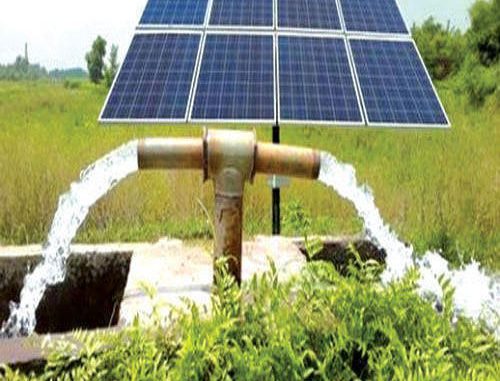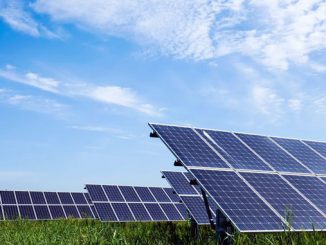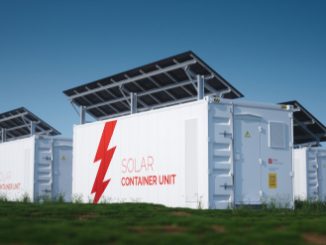
The Pradhan Mantri Kisan Urja Suraksha Evam Utthaan Mahabhiyan (PM-KUSUM) scheme, launched in 2019 by the Ministry of New and Renewable Energy, aims to usher in the sustainable transformation of India’s agricultural sector through solar irrigation. This space suffers from many structural challenges including low farm productivity, falling groundwater tables through underpriced electricity and stagnant farmer incomes. It was envisaged that the PM-KUSUM scheme would solve these woes of India’s agricultural sector.
In December 2021, the International Institute for Sustainable Development; The Energy and Resources Institute; the Council on Energy, Environment and Water; and the Initiative for Sustainable Energy Policy released a guidebook titled Implementing Solar Irrigation Sustainably: A Guidebook for State Policy-makers on Maximizing the Social and Environmental Benefits from Solar Pump Schemes. The guidebook provides state policymakers and agencies with recommendations on how solar irrigation can be implemented sustainably, focusing on standalone (off-grid) and grid-connected pumps. It is designed to help achieve PM-KUSUM’s main objectives in ways that maximise economic and social benefits while avoiding unsustainable water use. Renewable Watch provides an extract from the guidebook…
On coordination
The report suggests that the expertise of at least six critical state agencies should be leveraged. These include renewable energy development agencies, departments of agriculture and horticulture, electricity distribution companies (discoms), departments of water resources, departments of rural development, and departments of finance. In addition, system integrators should be involved in the implementation of grid-connected pumps. Moreover, formal coordination mechanisms such as interdepartmental bodies and convergence and steering committees should be set up for water-energy-food nexus policies. Such mechanisms have already been adopted for other government schemes such as the Pradhan Mantri Krishi Sinchayee Yojana (PMKSY), the report points out.
The responsibility for the implementation of standalone pumps should be decentralised to district collectors in states with strong local administrative capacity. This may improve ground-level coordination.
To create financial savings and promote water use efficiency in agriculture, focusing on the same beneficiaries and districts for solar pumps and micro-irrigation can be considered.
The plans for the uptake of solar pumps should be integrated into state and comprehensive district agricultural plans, district irrigation plans and state training programmes. This will ensure that district officials are part of agricultural transformation and can bolster farmer incomes.
On financing and affordability
Central and state agencies and financial institutions should work together to decrease subsidies by reducing pump costs, increasing buyer resources and sustainably financing schemes.
The report’s suggestions on reducing pump costs include:
- Exploring bulk procurement to achieve economies of scale,
- Establishing payment security facilities for financial institutions to lower the cost of capital and disburse subsidies on time,
- Establishing a loan default guarantee fund to reduce the risk perception of lending to farmers,
- Providing interest subsidies to lower the cost of borrowing, and
- Swapping subsidies for grid electricity with support for solar irrigation
The suggestions for increasing buyer resources include:
- Issuing clear prosumer metering policies for grid-connected pumps to reduce payment uncertainty,
- Coordinating with other agriculture and irrigation policies to increase crop productivity and farmer incomes, and
- Improving financial inclusion by pairing schemes with Kisan Credit Cards and building awareness through ground-level information services
Meanwhile, to sustainably finance schemes, the following measures can be taken:
- Linking up resources from agriculture, horticulture and irrigation policies, such as the PMKSY and the National Horticulture Mission,
- Reducing subsidies as solar pump costs fall and social acceptance increases, and
- Subsidy reforms or surcharges for grid electricity.
In addition, to help finance subsidies through the Agriculture Infrastructure Fund and scale up implementation, partnerships with financial institutions such as the National Bank for Agriculture and Rural Development should be explored.
On targeting
Standalone solar pumps should be prioritised in areas where farmers lack access to irrigation, and by avoiding areas where groundwater tables are low or declining. Meanwhile, grid-connected pumps should be the priority in areas where electricity supply is unreliable and the cost of supply is high.
Both oversizing and undersizing should be avoided while supporting the needs of small and marginal farmers. To discourage the practice of oversizing pumps, the state’s subsidy contribution should be linked to pump capacity, with a higher share for lower-capacity pumps.
The report suggests the following eligibility criteria:
- Reserving a share of pumps for low-income farmers,
- Relaxing landownership rules so that tenant and women farmers can benefit, and
- Requiring solar pumps to be paired with efficient irrigation practices, such as micro-irrigation technologies
The following methods can be used to address barriers to participation:
- Promoting ownership models, such as community and entrepreneurship models, and
- Increasing digital literacy and awareness by leveraging the networks of Common Service Centres, agriculture extension officers, Bank Sathis or Yuva Mitras.
The use of education, awareness and engagement is critical to build demand for pumps. This is because only a small percentage of farmers may know about solar pumps and the associated government schemes.
On infrastructure support
Water use efficiency should be enhanced by:
- Bundling solar pumps with micro-irrigation technologies such as drip and sprinkler systems,
- Leveraging surface water sources and creating water storage capacity, and
- Promoting regular cleaning and maintenance to prevent leakages and breakdowns.
For prosumers with grid-connected pumps, deployment of meters is important. The following points are necessary for prosumers: one, deployment of smart meters. Two, designing of clear metering mechanisms that give prosumers sufficient incentives. Three, building institutional capacity to enhance farmer participation. Four, selecting the appropriate feeder and boosting grid reliability. Five, addressing the free-rider challenge by installing watchdog transformers for non-participating farmers.
New solutions to promote the efficient use of energy and water need to be explored, such as:
- Universal controllers for standalone pumps so energy can be used for non-irrigation activities, including micro-cold storage and food processing,
- Financial incentives to discourage groundwater extraction, and
- Technologies to remotely curtail pumps.
- For all such innovative approaches, there is limited evidence, so states should carefully pilot and monitor impacts.
The report also recommends capacity building of farmers and discom staff for the effective use of solar pumps, and groundwater management through the Suryamitra programme for grid-connected solar pumps.
On monitoring and evaluation
To monitor and evaluate outcomes to gauge farmer well-being and groundwater impact, the use of data from Solar Energy Data Management (SEDM) platforms, alongside supplementary data collection efforts, has been suggested. These supplementary data collection efforts should include annual or biannual representative surveys of farmers and water conditions, including a review of non-scheme factors that also affect outcomes.
Social impacts need to be monitored and evaluated by examining if schemes are well targeted to low-income farmers do not impose undue costs on farmers such as multiple office visits and excessive paperwork; are well coordinated with allied social policies; and create income benefits.
It is also necessary to examine if schemes are effectively targeted to areas with low stress on water resources, and are coordinated with allied water policies. This is pertinent to ensure that solar pumps do not reduce the viability of groundwater resources.
To validate the data from remote monitoring systems, random field testing at regular intervals should be conducted. Previous state experiences with remote monitoring systems suggest that this will be necessary to ensure the reliability of the data that is being fed into the system.
Stakeholders in monitoring and evaluation should be involved beyond contributing to data collection, through processes such as capacity building for farmers and vendors on the use of the SEDM platforms, site visits to explore challenges, and quarterly or biannual written analysis of social and water platforms shared through multistakeholder discussion forums.
The article is an excerpt from the guidebook titled Implementing Solar Irrigation Sustainably: A Guidebook for State Policy-makers on Maximizing the Social and Environmental Benefits from Solar Pump Schemes written by Siddharth Goel, Rashmi Murali, Anas Rahman, Prajnashish Swain, Balasubramanian Viswanathan, Shalu Agrawal, Christopher Beaton, Mini Govindan, Abhishek Jain and Debajit Palit



